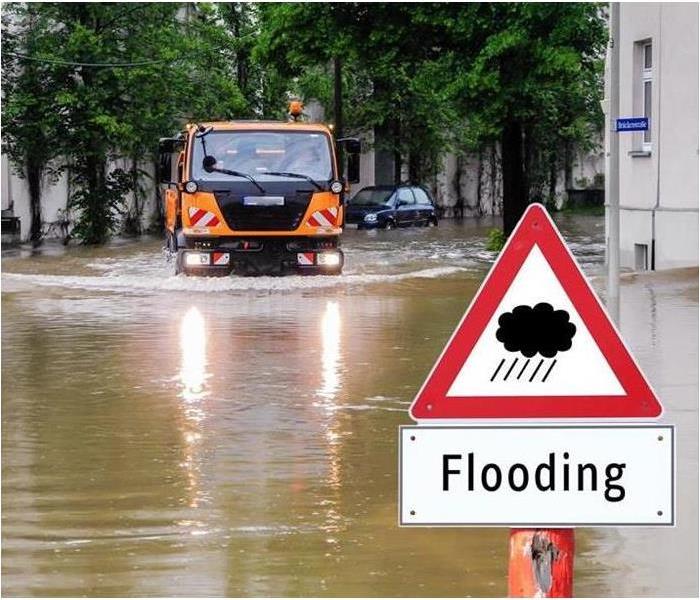The Five-Step Process of Flood Damage Restoration
8/30/2019 (Permalink)
Water damage from storms is common in our area due to the low-lying areas that are surrounded by mountains and hills. Unfortunately, water damage is one of the most serious issues that a property owner can face. Even small amounts of water damage can lead to serious repercussions, such as out-of-control mold growth or structural compromise. When dealing with a flood damage situation in your home or business, it is crucial to call a professional to mitigate flood damage. You are dealing with unsafe, category 3 water damage.
Understanding the Flood Damage Restoration and Mitigation Process
Over the years, a well-established protocol for the restoration and mitigation of water damage has taken hold. This is a proven and effective means of mitigating flood damage. Generally speaking, the restoration process follows five steps. Let's take a look at the water cleanup process and what steps are involved in dealing with potential flood damage.
If the restoration company can begin the water cleanup process within the first five hours of damage, the chances of a total restoration of the property are higher. On the other hand, waiting more than 24 hours will cause the chances of permanent damage to rise, with every passing hour.
1. SERVPRO of Chattanooga will begin assessing the extent of water in the home or water in the business. Through the use of advanced detection devices, they will be able to see if there is water in the structure that has seeped into spots not visible to the naked eye. If there is an active pipe break or supply line break, the flow of water will be stanched, and the pipe break or supply line break will be closed, with a welder, if necessary.
2. The next step is to remove the water using high-powered pumps and specialized vacuum equipment.
3. Next, the flooded home will begin undergoing the drying process. This involves the use of industrial-strength drying equipment, similar to that used in large car washes. The team will also deploy powerful dehumidifiers, which are capable of removing thousands of pounds of moisture from the atmosphere each hour.
4. At this point, with the drying process complete, there will be no further risk to the property, assuming the root causes of the supply line break, pipe break, or other source of flooding have been properly addressed.
5. After the property has been dried, any items that were removed from the premises will be thoroughly cleaned. Using a process similar to dry cleaning, special chemicals will be deployed that are capable of cleaning and restoring such items as photos, books, and furniture. The cleanup team will also use special sanitization products, which are capable of eliminating any nascent mildew or mold growths as well as eliminating unpleasant smells that often result from the water logging of materials, even after they have been completely dried out.
Now the cleanup process will be complete. The property will be completely restored to its prior condition, and the entire process will usually have taken no more than 24 hours, from phone call to the team leaving for the last time.
Visit http://www.SERVPROchattanooga.com for more information on water damage.






 24/7 Emergency Service
24/7 Emergency Service
